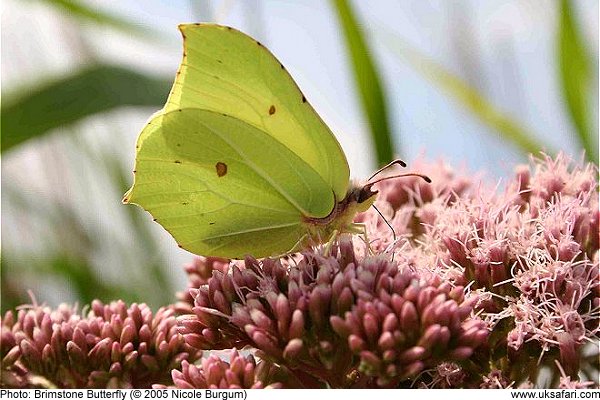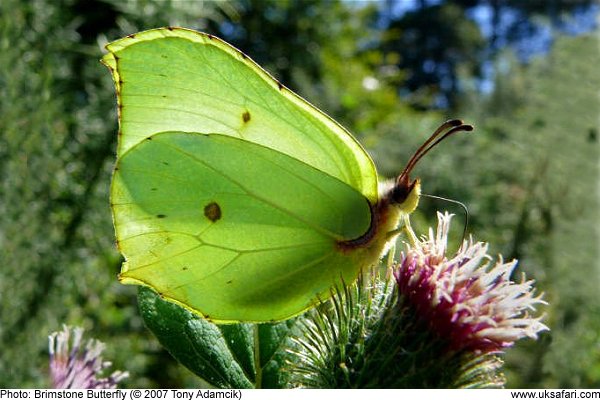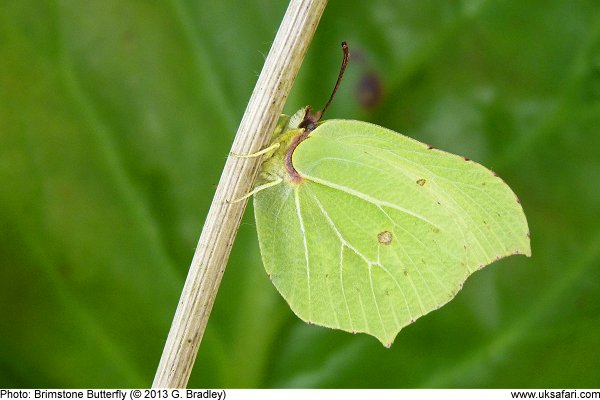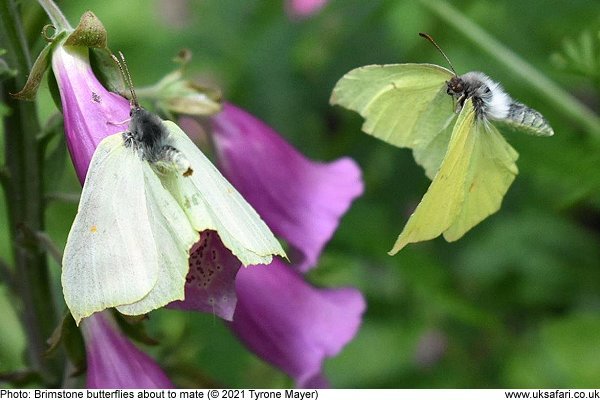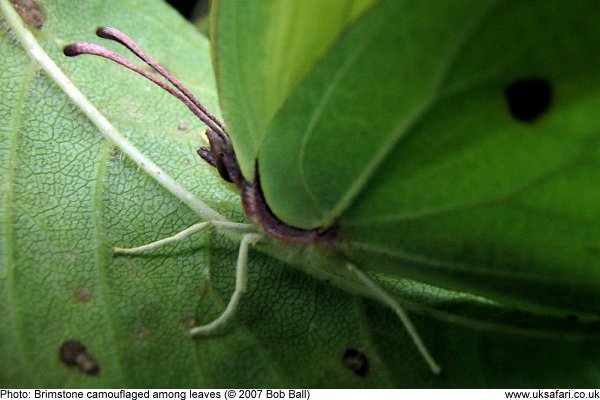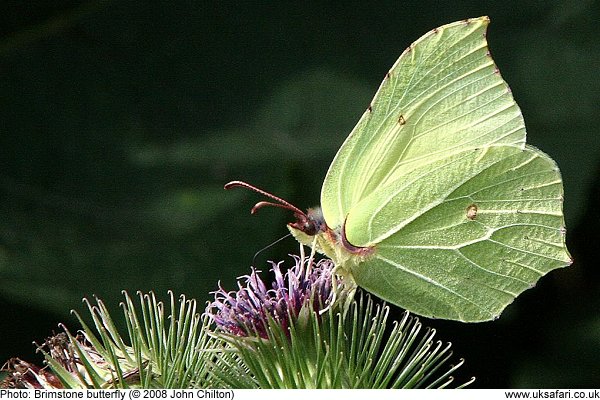 Quick Facts
Quick Facts
Scientific name: Gonepteryx rhamni
Size: Wingspan up to 58mm
Distribution: Found in England, Wales and Northern Ireland
Months seen: March to late October
Life span: Up to 1 year - the longest of all UK butterflies
Habitat: Meadows, hedgerows, woodland edges and gardens
Food: Nectar. The caterpillars feed on buckthorn
Special features: Brimstone butterflies are often the first and last butterflies seen in the UK each year. They go into hibernation around October time and emerge on the first sunny spring days in February or March.
Brimstone is an old-fashioned name for sulphur, which is a bright yellow coloured element. The Brimstone butterfly is so called because it is a similar colour. The female is a creamy-white colour, and in flight could be mistaken for a Large White butterfly. The males are a buttery-yellow colour.
Brimstones always perch with their wings folded above their backs, so the upper surfaces of the wings are only seen in flight or when mating. On the upper side of each of the four wings there is a small orange-yellow dot.
The colour and shape of the Brimstone is a perfect imitation of a leaf, right down to the thick veins and brown damage coloured patches.
 Related Pages
Related Pages

 Popular Pages
Popular Pages
Amphibians, Bats, Badgers, Beetles, Birds, Birds of Prey, Bumble Bees, Butterflies, Caterpillars, Creepy-Crawlies, Deadly Spiders, Dolphins, Dragonflies, E-Postcards, False Widow Spiders, Free Newsletter, Frogs, Fungi, Garden Spiders, Glow-Worms, Grey Squirrels, Hedgehogs, House Spiders, Ladybirds, Mammals, Marine Mammals, Moths, Owls, Reptiles, Spiders, Toads, Trees, Wildlife Hospitals
Copyright © 2020 G. Bradley UK Safari. All rights reserved | About Us | Links | Contributors


 Brimstone Butterflies
Brimstone Butterflies